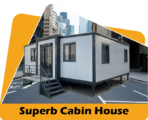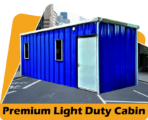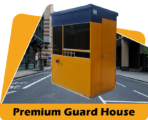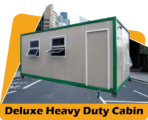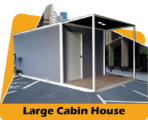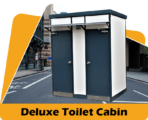10 Popular Questions about Portable Cabin in Malaysia
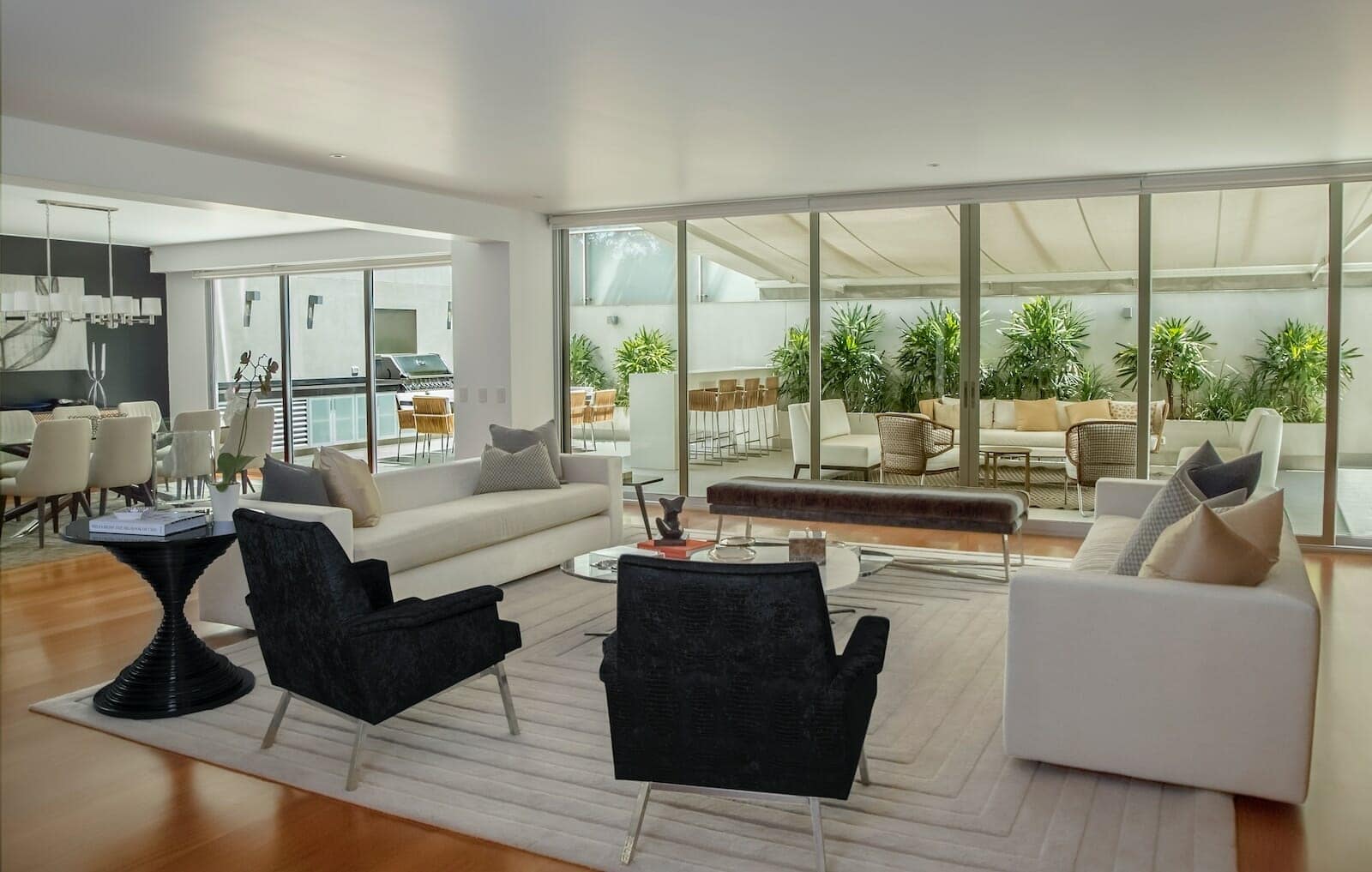
Site Offices at Construction Sites
Developers and contractors can setup portable site offices at their construction projects to house their site teams. These provide amenities like meeting rooms, staff rooms, kitchens and toilets onsite for the convenience of the staff.
Mine Site Accommodation
Mining companies can provide comfortable housing for hundreds of employees at their remote mine sites using portable accommodation cabins. This is a cost-effective way to give workers furnished rooms near the mines compared to constructing permanent housing blocks.
Military Barracks
Army camps for border security forces can utilize barracks and bunk houses made from portable cabins. These sturdy structures can be speedily deployed in remote border areas. Their portable nature also allows relocation whenever needed.
Portable Cold Storage
Perishable items suppliers, pharmaceutical companies, hospitals etc. can install portable cold room and freezer cabins. These offer plug-and-use cold storage capacity for items like food, medical supplies, chemicals etc. Useful for temporary storage needs.
Training Facilities
Cabins can be customized into portable training rooms equipped with the needed furniture, projectors etc. These can be used to conduct short courses, workshops, seminars at schools/colleges lacking extra space or companies without training rooms.
Warehouse Structures
Logistics firms can deploy inexpensive portable cabins as temporary warehouses for storage of goods, inventory and equipment at distribution hubs or seaports. Being modular structures, warehouse capacity can be expanded easily by adding more cabins.
In summary, portable cabins in Malaysia serve a very wide range of uses for both private companies as well as community applications owing to their versatility, rapid deployment capability and cost economics.
How to customize a portable cabin for your needs in Malaysia?
One of the biggest advantages of portable cabins is the ability to customize them to match specific requirements. Here are tips on how to customize portable cabins in Malaysia:
Define Purpose of Use
Firstly, be very clear on how you intend to use the cabin. Is it for office, accommodation, kitchen, laboratory, clinic etc? Defining the application will determine the layout and fittings needed. Share details with your portable cabin supplier so they understand your usage.
Specify Dimensions
Portable cabins are available in a range of standard sizes from 10ft x 8ft to 20ft x 50ft. You can also specify custom sizes like 12ft x 30ft or 8ft x 40ft as per your area requirements. The supplier can fabricate an exact cabin size for your needs.
Choose Number of Rooms
Depending on your usage, you can specify cabins with 1 room or multiple rooms divided into different functional areas. For staff accommodation, individual cabins or shared rooms can be provided. For offices, separate cabins for reception, meeting room, work stations etc. may be suitable.
Select Interior Wall and Ceiling Finishes
You can opt for plywood, laminate, gypsum board, glass paneling or other finishes for the interior cabin walls. Ceiling options include modular acoustic tiles, gypsum ceiling, plywood lining etc. This defines the overall look and durability.
Pick Flooring Type
Choose flooring suitable for your application – vinyl, tiles, cement screed, raised flooring etc. Options like timber or parquet flooring can also be installed for more premium cabin interiors. The supplier can install the specified flooring.
Design Custom Furniture
For office cabins, specify your needed workstations, meeting room tables, reception counter, storage shelves etc. Accommodation cabins can have customized beds, wardrobes, kitchen cabinets etc. designed. Your unique furniture needs can be fulfilled.
Specify Electrical Fittings
Indicate your interior lighting needs, power sockets, wiring requirements, internet points etc. so these can be provisioned. Higher capacity electrical setup is possible for IT offices, commercial usage etc.
Select Plumbing Options
Depending on water supply available, you can opt for internal water tanks, sink taps, shower fittings, water heaters etc. Sewage management like septic tanks can also be integrated under the cabin.
Choose Ventilation
Go for glass windows, exhaust fans, air-conditioners depending on your ventilation requirements. Cooling needs vary based on cabin location and usage.
Select Safety Equipment
Specify needs like fire extinguishers, smoke detectors, emergency lighting, exit signs etc. to be installed. This ensures the cabin meets safety standards for occupancy approval.
Add Branding and Visual Identity
You can customize the cabin exteriors with your corporate colors, logo and signage. This gives your cabins a unique visual identity.
By providing the above inputs to your portable cabin supplier, you can get a tailored solution matching your specific operational needs at the site.
What are the steps involved in setting up a portable cabin in Malaysia?
Installing a portable cabin requires careful preparation and systematic execution. Here are the typical steps involved in setting up a portable cabin in Malaysia:
Site Evaluation
Conduct site visits to check terrain, access roads, space availability and ingress/egress routes. Services like electrical, water and sewage availability need to be verified. Site plans must be studied for any constraints or special preparations needed.
Foundation Design
Suitable foundation has to be designed based on site soil condition and portable cabin size/weight. Materials like concrete, raised platforms or metal skids are commonly used. Foundation plan is needed for local authority submission.
Cabin Customization
Based on your interior fit out needs, electrical and plumbing requirements, the cabin can be factory customized with fittings, wiring, utility connections etc. This prepares it for rapid installation onsite.
Transport Preparation
Ensure access roads to the site can accommodate tractor trailers/hydraulic cranes needed for cabin delivery. Specific transport permits may be needed for road access or if oversized deliveries. Cabin panels may need to be split for transportation if site access constrained.
Foundation Works
Prepare the leveled ground with the designed foundation as per approved drawings. Ensure accurate alignment to ease cabin placement. Utility connection points to be readied. Cure concrete sufficiently before cabin installation.
Cabin Delivery
Transport the cabin securely to the site using suitable vehicles. Breakdown large cabins into transportable sections if necessary. Use cranes/forklifts at tight access sites.
Cabin Placement
Lift and carefully place the cabin over the prepared foundation using cranes or hydraulic lifting equipment. Align perfectly and secure the cabin properly to the foundation using bolts/clamps as designed.
Assembly and Connections
Assemble the various cabin sections together using connecting joints and sealants to ensure weatherproofing. Connect all external utilities like electrical, water and sewage to hook up the cabin.
Fit Out and Testing
Complete all interior fit outs like partition walls, flooring, lighting, plumbing fittings etc. if not pre-installed at factory. Test all power, water and drainage connections thoroughly.
Inspection and Approvals
Relevant authorities like Fire Department, Municipal Council etc. will inspect site installation, safety systems, utilities etc. before approving occupancy. Licence may be needed for commercial operation of the cabin.
Access Provisioning
Provide steps/ramps, pathways and access doors as needed for entry and exit from the cabins. Install handrails if required for safety. Complete any other final exterior works.
Commissioning
Upon obtaining all approvals do a final verification of the complete portable cabin setup. Confirm safety, proper utilities functioning and quality standards. Get user sign offs before handing over for occupation and usage.
With careful planning and systematic execution, portable cabins can be installed quickly and properly to meet all regulations. This enables fast deployment and usage.
What are the maintenance requirements for portable cabins in Malaysia?
Portable cabins are durable structures designed for long, trouble-free usage. However, periodic maintenance is required. Here are the key maintenance aspects for portable cabins in Malaysia’s climate:
Cleaning Exteriors
Wash the exterior cabin walls regularly to remove dust, dirt and grime build up. Use mild detergent and water avoid corrosion of metal surfaces. This maintains the exterior appearance and prevents rusting.
Checking Exterior Seals
Inspect seals around doors, windows, panel joints etc. to ensure there is no gap or damage. Replace worn out seals to prevent water ingress or pest entry into cabins during rains. Proper sealing is crucial.
Clearing Drainage
Ensure roof rainwater downpipes, site drainage channels are free flowing and clear of debris. This prevents water logging or flooding around the cabins during heavy rainfall.
Testing Smoke Detectors
Smoke detectors and fire alarm systems should be tested monthly by pressing test buttons to confirm they are functional. Replace batteries when low. This is an important fire safety requirement.
Pest Control
Do periodic pest control using proper chemical treatments or bait traps around the cabins’ exterior to keep away termites, rodents and other pests. This prevents damage to the structure and unsanitary conditions.
Checking Fittings
Inspect door hinges, handles, latches, locks and other fittings monthly to look for rust, damage or need for lubrication. Repair or replace damaged fittings immediately.
Electrical Inspections
Get a licensed electrician to annually inspect the electrical wiring, boards, sockets, switches etc. Rectify any damaged components like loose wiring, burnt plug points etc. immediately. This prevents any electrical hazards.
Plumbing Maintenance
Check water piping, taps, showers, sink drainage periodically for leakages or blockages. Get a plumber to service them annually. Repair leaks promptly to prevent water damage.
Interior Repainting
Repaint interior walls periodically, especially if there is humidity and moisture build up. This refreshes the interiors, prevents ugly mildew growth and extends the cabin lifespan.
Waste Management
If septic systems are used, desludge tanks periodically. For portable toilets, empty holding tanks regularly via vacuum trucks. Follow all environmental regulations for waste handling.
By sticking to a proper maintenance schedule, portable cabins can deliver many years of trouble free use. Maintenance costs are low and worth the investment.
How are portable cabins better than conventional buildings in Malaysia?
Portable cabins have certain advantages compared to conventional permanent buildings in Malaysia:
Faster Deployment
As cabins are prefabricated, they can be delivered and installed on site within 1-2 weeks, ready for usage. Constructing a conventional building takes months involving extensive site works, building, fittings etc.
Relocation Flexibility
Portable cabins can be easily dismantled and transported to new locations conveniently. This is not possible with permanent buildings. Cabins offer excellent redeployment flexibility for temporary projects.
Lower Costs
Portable cabins avoid major material and construction costs of permanent buildings like laying foundations, building frames and walls, extensive fit outs etc. Their modular assembly makes them 20%-50% cheaper than permanent structures.
Customizability
It is easy to customize portable cabins based on user needs by modifying layouts, fittings, utilities etc. Conventional buildings offer limited flexibility for alterations and customizations.
Minimal Site Preparation
As portable cabins are factory fabricated, minimal construction work is needed at site. Only foundation laying, utility hookups are required before delivery of ready cabins. Extensive brickwork, plastering etc. is avoided.
Ease of Expansion
For additional space, new portable cabins can be easily added. Conventional buildings require substantial modifications like breaking walls, adding floors etc. to expand capacity.
Temporary or Permanent Use
Portable cabins offer excellent usage flexibility. They can be used for few months to many years at a site by securing to foundations before shifting eventually. Conventional buildings are seldom temporary.
Environmentally Friendly
Portable cabins have minimal site disturbance and debris generation versus permanent construction involving material waste and soil excavation. Used cabins can be refurbished and reused instead of demolishing site structures.
Disaster Resilience
Portable cabins made from steel can better withstand cyclones, earthquakes and flood damage compared to masonry structures. They can be repaired or replaced easily if damaged.
Low Maintenance
With metal exterior and durable interior finishes, portable cabins require minimal maintenance like cleaning, pest control, leak repairs etc. compared to permanent buildings with plastering, painting, roofing needs.
In summary, portable cabins provide faster setup, relocation ability, cost savings, ease of customization, expansion and low maintenance compared to permanent buildings – making them a smart choice for many temporary and semi-permanent usages.
Key Takeaways
- Portable cabins provide fast and economical solutions for temporary building needs like offices, housing, toilets etc.
- They offer benefits like rapid installation, relocation flexibility, customization and lower costs compared to conventional construction.
- Various types of portable cabins are available including office cabins, living quarters, kitchens, cold rooms etc.
- When purchasing portable cabins, key considerations are costs, quality, customization capability and after-sales service of suppliers.
- Proper regulations must be followed for building plans, fire safety, and other permits/approvals when setting up portable cabins.
- Careful site planning, foundation preparation and systematic installation is crucial for proper portable cabin setup.
- Periodic maintenance of cabins involves cleaning, inspection of seals, electrical systems, waste management and pest control.
- With their versatile utility and advantages, portable cabins are becoming a popular semi-permanent building solution in Malaysia.
Conclusion
- Portable cabins provide an adaptable, time and cost-efficient building solution suitable for many applications.
- When selected and installed properly, they offer years of trouble-free usage.
- Suppliers with wide design options and customization capabilities should be chosen for getting cabins tailored to specific needs.
- By following regulations and systematic installation process, portable cabins can be setup quickly and safely.
- With competitive pricing, quick turnaround and flexible utility, portable cabins make sense for many temporary building requirements in Malaysia.
